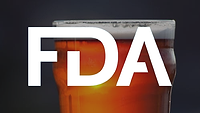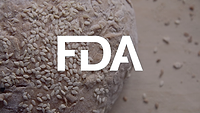FDA Updates Guidance to Address Food Manufacturers Circumventing Allergen Cross-Contact Requirements for Sesame

Image credit: Maria Ionova via Unsplash
Since sesame became the ninth major food allergen under the Food Allergy Safety, Treatment, Education, and Research (FASTER) Act, food manufacturers have attempted to circumvent the requirements for preventing allergen cross-contamination by intentionally adding sesame to their products and declaring its presence on their labels. To address this trend, the U.S. Food and Drug Administration (FDA) has updated its Guidance for Industry: Hazard Analysis and Risk-Based Preventive Controls for Human Food to include a new chapter on food allergens that helps food facilities avoid allergen cross-contact and ensure proper labeling.
The FASTER Act, which became effective on January 1, 2023, requires sesame, when present in food, to be disclosed on food labels. Businesses are expected to implement controls to significantly minimize or prevent sesame allergen cross-contact. Although the FASTER Act was intended to make food safer for those who experience an allergic reaction to sesame, some manufacturers are intentionally adding sesame to products that previously did not contain sesame and are labeling the products to indicate its presence, rather than take appropriate measures to minimize or prevent cross-contact. Although this behavior keeps manufacturers in compliance with the law for disclosing the presence of a major food allergen, FDA has denounced the practice as it limits options for consumers who are allergic to sesame.
FDA is encouraging industry to follow the newly updated draft guidance on ways to significantly minimize or prevent allergen cross-contact and undeclared allergens rather than intentionally adding sesame to their products to comply with the law.
The updated draft guidance includes a new chapter, titled, “Chapter 11—Food Allergen Program,” which explains how to establish and implement a food allergen program that ensures food is protected from major food allergen cross-contact and that the finished product is properly labeled with respect to the major food allergens. The chapter provides many examples of ways to significantly minimize or prevent allergen cross-contact and undeclared allergens using current good manufacturing practices (CGMPs) and preventive controls. As labeling errors are the cause of most FDA food allergen recalls, Chapter 11 also includes guidance on how to monitor or verify that food allergens are properly declared and the correct label is used for products.
Chapter 11 also discusses circumstances in which, despite adherence to appropriate CGMPs and preventive controls, allergen presence due to cross-contact cannot be completely avoided. The available options to a firm in these cases are discussed, such as the voluntary use of allergen advisory statements. The chapter complements FDA’s recently released Draft Compliance Policy Guide on Major Food Allergen Labeling and Cross-Contact, which reflects the agency’s risk-based and science-based approach for the evaluation of potential allergen violations.
Unrelated to allergens, the recently updated draft guidance also includes a second new chapter, titled, “Chapter 16—Acidified Foods,” which explains how the manufacturers of certain acidified foods can use their existing procedures, practices, and processes to comply with acidified foods regulations that satisfy requirements under the preventive controls for human foods rule. Chapter 16 applies to manufacturers, processors or packers of acidified foods—such as some processed sauces, beans, cucumbers or cabbage—that have an overall pH of 4.6 or below.
Looking for a reprint of this article?
From high-res PDFs to custom plaques, order your copy today!






